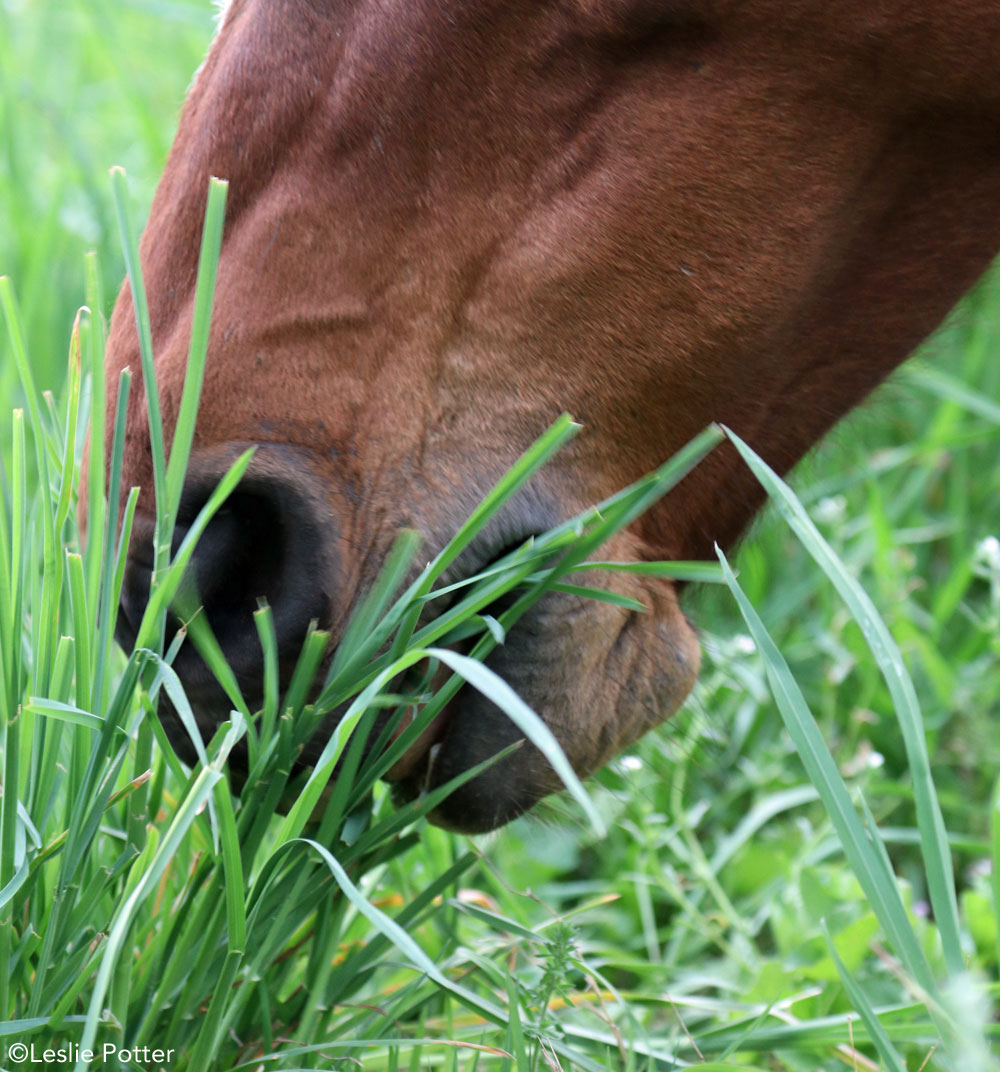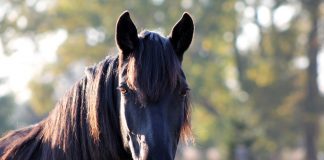Laminitis

What it is: Laminitis in horses is an inflammation of the laminae, the structures in the foot that connect the hoof wall to the coffin bone. It’s usually caused by overeating grain or lush spring grass. Other causes include excessive exercise on hard surfaces (“road founder”), too much weight-bearing while favoring an injury in another leg, and a retained placenta after foaling. In severe cases, the coffin bone inside the hoof tears away from the hoof wall and rotates downward. This rotation is called founder.
What to do: Call your veterinarian immediately if your horse shows signs of laminitis or if you suspect that he may develop it; for instance, he broke into the feed room and helped himself to the sweet feed. While you’re waiting for the vet to arrive, stand your horse in ice water to reduce the inflammatory response. Do not walk him, and don’t administer any medication unless your veterinarian tells you to. If you can’t ice your horse’s feet, place him in a stall bedded deeply with sand or shavings if possible, with only grass hay to eat.
Read more about treatment for laminitis in horses >>
Outlook: Laminitis cannot be cured, and the disease causes serious chronic problems such as lameness and metabolic alterations. Once a horse has experienced a bout of laminitis, he is much more susceptible to recurrences. Although some cases can be managed with corrective shoeing and dietary adjustments, such as restricting grain and avoiding lush pastures, most laminitic horses do not regain their pre-laminitis health status.
Read more about laminitis recovery >>
Back to Horse Health Glossary
This article originally appeared in the 2012 issue of Horses USA.





